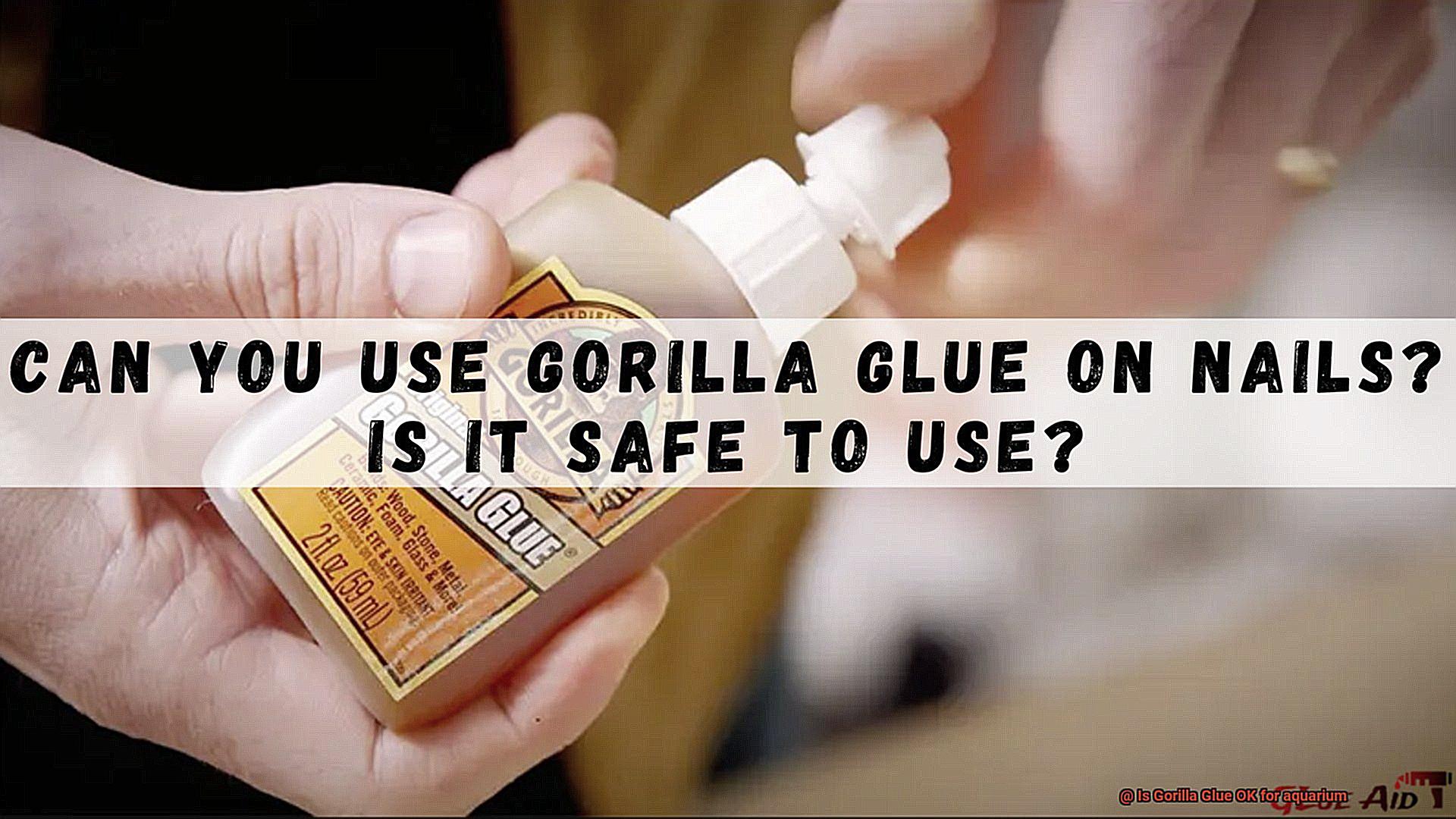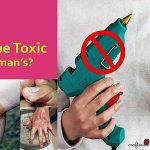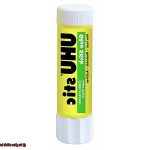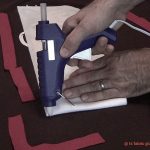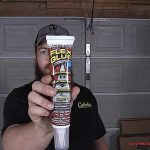Setting up an aquarium is like creating a miniature underwater paradise. But let’s face it, keeping everything in place can be a challenge. That’s where the question of whether Gorilla Glue is safe for aquarium use comes into play. Well, fear not, my fellow fish enthusiasts, because we’re about to dive deep into the world of Gorilla Glue and its compatibility with our aquatic friends.
In this blog post, we’ll explore the pros and cons of using Gorilla Glue in your aquarium. We’ll uncover its remarkable bonding strength, durability, and versatility that make it a go-to adhesive for many DIY projects. But we’ll also address the potential safety concerns associated with its use, so you can make an informed decision for your finned companions.
Pros of Gorilla Glue in Aquariums:
Contents
Gorilla Glue has earned quite a reputation for being the superhero of adhesives. Its ability to bond various materials like glass, plastic, and ceramic is nothing short of impressive. This makes it an excellent choice for securing ornaments or attaching plants to create a captivating underwater landscape.
What sets Gorilla Glue apart from other adhesives is its long-term durability. Once cured, it becomes water-resistant, ensuring a reliable hold even in the splashiest of aquarium environments. No more worrying about your decorations falling apart due to constant exposure to moisture or getting soaked during water changes.
Cons of Gorilla Glue in Aquariums:
Now, before you get too excited about Gorilla Glue’s superpowers, let’s talk about some potential downsides when using it in your aquarium. The main concern revolves around the curing process and the release of chemicals that could be harmful to both humans and aquatic life.
Gorilla Glue contains a substance called isocyanate that can cause irritation if inhaled or ingested. That’s why it’s crucial to ensure proper curing before introducing any fishy inhabitants to their new home. Once fully cured, the glue becomes inert and safe for use, but any exposure before that can pose a risk.
Safety Precautions:
To keep your underwater buddies safe and sound, here are a couple of precautions to follow when using Gorilla Glue in your aquarium:
Take it outside: Apply Gorilla Glue outside the tank and allow it to cure completely before bringing it near the water. This way, you can prevent any chemicals
What is Gorilla Glue?
In the world of do-it-yourself projects, having the right adhesive is crucial. Enter Gorilla Glue, a renowned adhesive that has become the go-to choice for both DIY enthusiasts and professionals alike. This versatile and powerful adhesive boasts exceptional strength and a wide array of applications. In this article, we will delve into the fascinating world of Gorilla Glue, exploring its unique properties, chemical composition, and specialized formulations to help you achieve unparalleled results in your projects.
Unyielding Adhesion:
Gorilla Glue, a polyurethane-based adhesive, has gained recognition for its remarkable ability to bond to virtually any surface. Whether you’re working with wood, metal, ceramic, or even glass, Gorilla Glue forms an unbreakable bond that stands the test of time. Bid farewell to wobbly chair legs or cracked pottery – Gorilla Glue has got you covered.
The Chemistry Behind the Strength:
At the core of Gorilla Glue’s strength lies its exceptional chemical composition. Comprised of polyurethane, this adhesive reacts with moisture to create an immensely strong bond. Upon application, Gorilla Glue expands and generates a foaming action that fills gaps and guarantees a robust connection. This feature proves invaluable when working on projects that demand precise bonding.
Weatherproof and Waterproof:
Gorilla Glue not only offers unrivaled strength but also possesses impressive resistance to water. Once cured, it becomes completely waterproof, making it suitable for both indoor and outdoor use. Whether you’re fixing a leaking pipe or creating an outdoor sculpture, rest assured that Gorilla Glue will brave the elements without compromising its adhesive properties.
Tailored Formulations for All Your Needs:
Recognizing that every project is unique, Gorilla Glue offers a range of specialized formulations to cater to specific bonding requirements. Let’s explore some of their remarkable formulas:
- Original Gorilla Glue: This brown-colored adhesive is ideal for bonding porous surfaces such as wood. Its expanding foam action ensures a robust and reliable bond. However, it is important to note that this formulation should not be used in aquariums due to the potential release of chemicals.
- Gorilla Super Glue: When time is of the essence, Gorilla Super Glue is your ultimate ally. This cyanoacrylate-based glue delivers an instant and precise bond without any expanding or foaming. However, always ensure that the specific formulation you choose does not contain additives or fillers that may harm aquatic life.
- Gorilla Wood Glue: Tailored specifically for woodworking projects, this adhesive is not recommended for use in aquariums as it contains additives that may not be safe for aquatic environments.
Different Types of Gorilla Glue
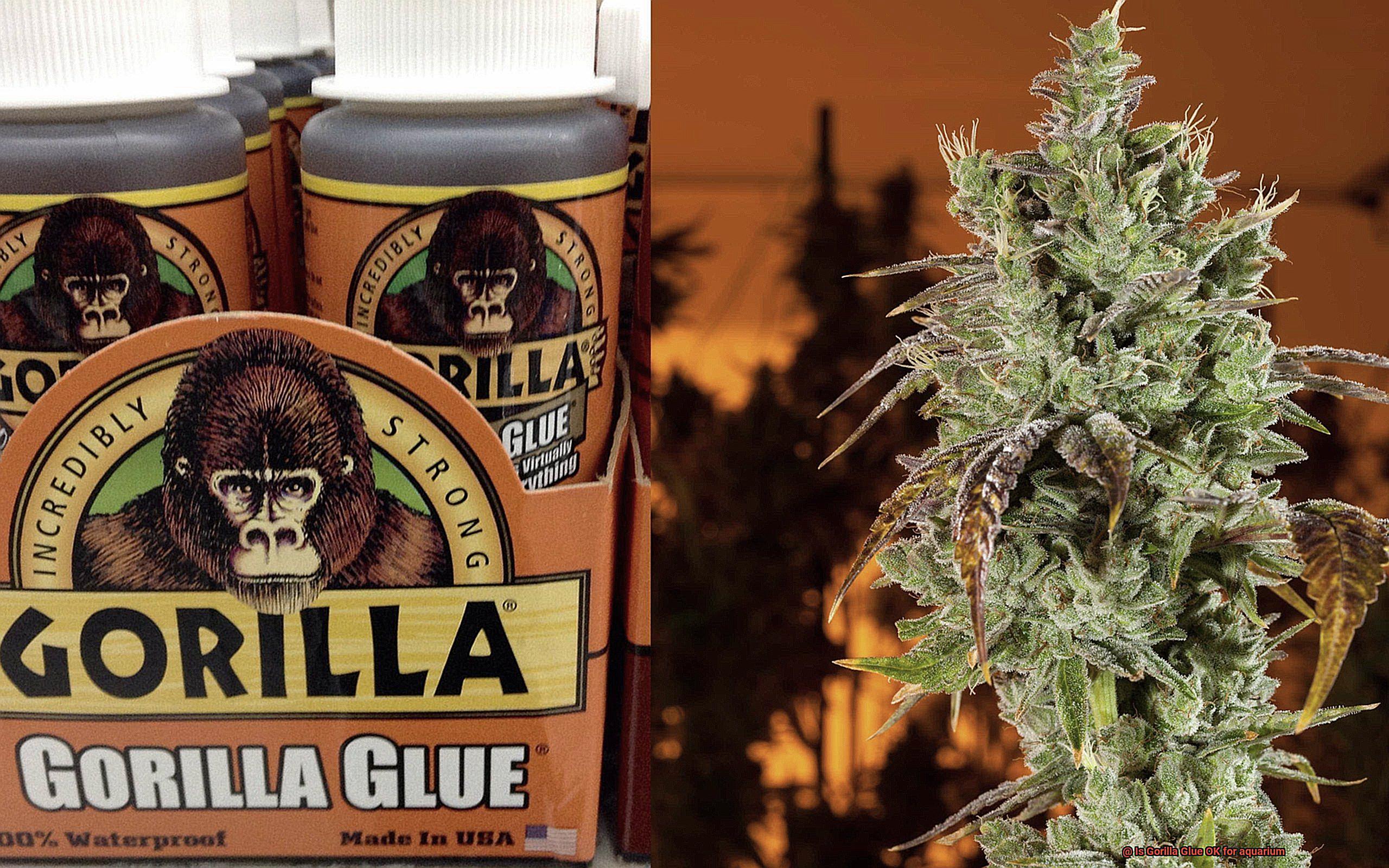
Owning an aquarium comes with the responsibility of maintenance and repairs. When it comes to choosing the right adhesive, Gorilla Glue is a popular brand known for its strength and versatility. However, not all types of Gorilla Glue are suitable for aquarium use. In this guide, we will explore the different types of Gorilla Glue available and their compatibility with your underwater oasis.
Gorilla Glue Original: Versatility at Its Best
Gorilla Glue Original is a go-to adhesive for various materials such as wood, metal, and glass. It forms a strong bond and is waterproof once cured. However, it is not recommended for continuous submersion or use in aquariums due to the foaming action during curing, which can release harmful chemicals and make precise application challenging.
Gorilla Super Glue: Instant Fixes, Not for Aquariums
Gorilla Super Glue is perfect for quick repairs with its fast-drying formula and strong bond. However, caution must be exercised when using it in an aquarium setting. While it may be safe once fully cured, it should never be applied directly to water or submerged due to potential chemical release.
Gorilla Wood Glue: A Woodworking Marvel
Gorilla Wood Glue is specially formulated for woodworking projects but is not suitable for aquariums. It may contain additives that can be harmful to aquatic life. When bonding wood in your aquarium, opt for adhesives specifically designed for underwater use.
Gorilla Epoxy: Unleash the Bonding Power
Gorilla Epoxy is a two-part adhesive that creates a durable bond on various surfaces. Although versatile and suitable for indoor and outdoor use, it is not recommended for aquariums due to potential harm to aquatic life.
Safety First: Aquarium-Safe Options
When it comes to aquarium repairs, prioritize the safety of your aquatic inhabitants. Look for adhesives specifically labeled as safe for aquarium use or choose aquarium-specific silicone sealants and epoxy putties. These options are non-toxic and designed to withstand underwater conditions without harming your fish or other aquatic creatures.
Original Gorilla Glue
Well, before you take the plunge, let’s dive into the potential risks and benefits of this adhesive powerhouse.
- Curing time: When it comes to Gorilla Glue, patience is key. This adhesive needs ample time to fully cure and dry before it’s safe for underwater use. To ensure a secure bond, allow at least 24 hours for it to set completely. Trust me, it’s worth the wait.
- Waterproof bond: Once cured, Original Gorilla Glue forms a rock-solid, waterproof bond that can withstand the test of time. This makes it an excellent choice for aquarium use, as long as it’s applied correctly.
- Harmful chemicals: Here’s where we need to be cautious. Gorilla Glue contains certain chemicals that can be harmful if ingested by fish or other aquatic creatures. To minimize risks, it’s best to apply the glue outside the tank and allow any fumes or residues to dissipate before introducing it to the aquarium.
- Use sparingly: Less is more when it comes to Gorilla Glue in your aquarium. Avoid applying it directly onto live rock, corals, or other sensitive organisms. Instead, reserve it for non-living elements like attaching decorations or repairing equipment. A little goes a long way.
- Consider aquarium-safe alternatives: If you’re concerned about the potential risks of using Original Gorilla Glue, fear not. There are specialized aquarium-safe adhesives and silicones available that have been formulated without harmful chemicals. These products have also undergone rigorous testing specifically for underwater applications.
Gorilla Super Glue
Are you stuck in a dilemma and wondering if Gorilla Super Glue can be your underwater savior? Dive into this comprehensive exploration of the topic and discover if this popular adhesive is compatible with your aquatic paradise.
The Versatile Gorilla Super Glue:
Renowned for its incredible bonding capabilities and quick-drying formula, Gorilla Super Glue has become the go-to choice for countless DIY projects and repairs. However, its suitability in an aquarium setting requires careful consideration.
Curing is Key:

One crucial aspect to keep in mind when using Gorilla Super Glue in an aquarium is ensuring that it is fully cured before introducing it into the tank. The curing time may vary based on the size and thickness of the glue application, but typically, it takes around 24 hours for complete curing. Once cured, the glue becomes inert and non-toxic, ensuring its safety for aquarium use.

Application Tips:
To ensure a successful application of Gorilla Super Glue in your aquarium, it is recommended to use it sparingly and solely on non-porous surfaces. Direct contact with water or any surfaces that will come into contact with your fish or plants should be avoided. Instead, apply the glue outside the tank and allow it to fully cure before immersing the bonded items underwater.
Aquarium-Safe Alternatives:
If you prefer to err on the side of caution or if you have specific concerns about using Gorilla Super Glue in your aquarium, fret not. Several aquarium-safe alternatives are available. Non-toxic silicone-based sealants have been specially designed for underwater use and are often the preferred option for sealing and bonding materials in aquariums.
Research and Test:
As with any adhesive you plan to use in your aquarium, thorough research and testing are paramount to ensuring the safety of your aquatic environment. Take the time to understand the properties of any glue you intend to use and check for any specific aquarium-safe recommendations. This diligent approach will help you make an informed decision and safeguard your beloved underwater ecosystem.
Final Thoughts:
Although Gorilla Super Glue is not specifically labeled as aquarium-safe, many aquarium enthusiasts have successfully utilized it without any negative impact on their aquatic life. Nonetheless, it is essential to exercise caution, apply it away from direct contact with water, and prioritize non-porous surfaces. If you still harbor concerns, exploring aquarium-safe alternatives can bring you peace of mind.
Gorilla Wood Glue
Step into the world of aquarium enthusiasts, where the pursuit of perfection knows no bounds. Today, we embark on a mission to uncover the truth about Gorilla Wood Glue and its suitability for underwater repairs in your beloved aquatic oasis. So, strap on your diving gear and let’s dive deep into this adhesive adventure.

Before we take the plunge, it’s important to note that Gorilla Wood Glue is not specifically formulated for underwater use. Its primary purpose is to bond wood surfaces together, not to withstand the relentless assault of water and moisture. So, if you want to ensure the safety and longevity of your precious aquarium setup, it’s best to opt for an adhesive that proudly wears the label of “aquarium safe.”
One of the key concerns with using Gorilla Wood Glue in an aquarium environment is its potential toxicity. While it is generally considered non-toxic once fully cured, you certainly don’t want any harmful substances leaching into your aquatic paradise during the curing process. That’s why it’s crucial to choose an adhesive that is specially formulated and labeled for aquarium use – your fishy friends deserve nothing but the best.
Durability is another critical factor to consider. Gorilla Wood Glue may struggle to hold up under the constant assault of water, leading to leaks or even structural issues over time. On the flip side, specialized aquarium-safe adhesives are built to withstand the watery depths without compromising their strength and integrity.
So, my fellow aquarists, while Gorilla Wood Glue is a dependable adhesive for woodworking projects, it may not be your best bet for aquarium repairs. By investing in an adhesive specifically formulated and labeled for underwater use, you can have complete peace of mind knowing that you’re safeguarding the well-being of your aquatic pets and enjoying a secure and long-lasting aquarium setup.
Considerations when Using Gorilla Glue in an Aquarium
Using Gorilla Glue in an aquarium requires careful consideration to ensure the safety of the fish and other aquatic life. Here are some key considerations to keep in mind:
- Choose the right type of Gorilla Glue: The original Gorilla Glue expands and foams when it dries, making it unsuitable for aquarium use. Instead, opt for Gorilla Super Glue or Gorilla Clear Glue, which are generally considered safe.
- Check for non-toxicity: Look for Gorilla Glue products that are labeled as non-toxic once fully cured. This ensures that the glue won’t harm the fish or other aquatic life in the aquarium.
- Allow for proper curing time: Gorilla Glue has a longer curing time compared to other adhesives. It’s important to allow enough time for the glue to fully dry and cure before submerging it in water. Failure to do so may result in chemical leaching or residues that could be harmful to the aquarium inhabitants.
- Prepare the surfaces: Before applying Gorilla Glue, make sure to clean and prepare the surfaces that you plan to bond. Remove any debris or contaminants, and roughen smooth surfaces slightly to enhance adhesion.
- Apply sparingly and precisely: Use Gorilla Glue sparingly to avoid excessive visual obstructions or chemical reactions in the water. Be careful not to have direct contact between the glue and any living organisms in the tank.
- Understand underwater limitations: While Gorilla Super Glue and Gorilla Clear Glue are generally safe for aquarium use, they are not specifically designed for underwater applications. To achieve optimal results, it’s best to dry the surfaces before applying the glue.
- Monitor long-term effects: Regular maintenance and monitoring of the aquarium are essential when using Gorilla Glue. Over time, the glue may deteriorate or release chemicals into the water, potentially affecting water quality and the health of the aquatic inhabitants.
Allowing the Adhesive to Fully Cure and Dry
Today, we embark on a captivating journey into the realm of adhesive safety in your aquatic oasis. Our focus will be on the significance of allowing Gorilla Glue to fully cure and dry before introducing any fish or aquatic life into your aquarium. So grab your snorkel and let’s dive right in.
The Chemical Conundrum:
Gorilla Glue, renowned for its strength and versatility, contains polyurethane that can release chemicals into the water during the curing process. While harmless to us land-dwellers, these chemicals can pose a threat to our underwater companions.
Timing is Everything:
The curing time for Gorilla Glue varies based on factors such as temperature, humidity, and glue application. However, as a general rule, it is advisable to exercise patience and allow at least 24 hours for the glue to fully cure before placing it in your aquarium. Remember, good things come to those who wait.
Ventilate and Debunk Odors:
During the curing process, it’s crucial to keep your aquarium well-ventilated to minimize fume buildup. Open windows or use fans to usher away any odors or gases emitted by the adhesive. Your fish will thank you for the breath of fresh air.
Thick Bonding Requires Extra Time:
Thicker applications of Gorilla Glue may take longer to fully cure. If you’re bonding hefty decorations or tackling significant repairs, prepare yourself for a bit more waiting time before the adhesive dries completely. Rest assured, your patience will yield remarkable results.
Rinse Away Residuals:
After the glue has endured the full curing process and dried thoroughly, it is essential to rinse the affected area with water before adding any fish or aquatic life. This crucial step ensures the removal of any residual chemicals or odors from the adhesive, guaranteeing a safe environment for your underwater companions.
Water Test for Peace of Mind:
For an added sense of security, consider conducting a water test after applying Gorilla Glue. Monitor parameters such as pH levels, ammonia levels, and nitrate levels over time to verify that they remain within acceptable ranges. This additional step will grant you peace of mind, knowing your aquarium is in pristine condition.
Safety Precautions when Using Adhesives in an Aquarium
Today, we’re going to take a deep dive into the world of safety precautions when using adhesives in your beloved fishy haven. Our aquatic companions deserve the utmost care and protection, so let’s explore the necessary steps to keep them safe and sound.
First and foremost, it is essential to select an adhesive specifically designed for aquarium use. Avoid grabbing any old glue from your household stash, as regular adhesives can contain harmful chemicals that seep into the water and wreak havoc on your aquatic buddies. Instead, opt for an adhesive labeled as aquarium-safe or fish-safe – a true ally for our underwater ecosystem.
Gorilla Glue may be known for its strength, but it should never find its way into our underwater oasis. This adhesive contains polyurethane, which can release toxins into the water and harm our beloved aquatic life. So, let’s reserve Gorilla Glue for other projects and choose a safer alternative for our aquarium needs.
Cleanliness is key. Before applying any adhesive, make sure to thoroughly clean the surfaces you’ll be bonding. Any dirt, debris, or pesky algae can compromise the bond and affect the effectiveness of the adhesive. Speaking of algae, it’s also a good idea to remove any sensitive or delicate organisms from the area where the adhesive will be used. We don’t want them exposed to potentially harmful fumes or residues.
Now let’s talk about personal safety. Gear up. Wear appropriate protective gear like gloves and eye protection when handling adhesives. Some adhesives emit strong odors or contain volatile compounds that can irritate your skin, eyes, or respiratory system. So protect yourself before you wreck yourself.
Ventilation, my friends, is absolutely crucial. Ensure that there’s proper air circulation in the room or area where you’ll be using the adhesive. This will minimize your exposure to any harmful fumes and keep the air fresh for both you and your aquatic friends.
And here’s a golden rule: always, always follow the manufacturer’s instructions. Different adhesives may have specific application methods or curing times that need to be followed for optimal results and safety. So read those instructions carefully and stick to ’em.
Last but not least, patience is a virtue. Allow sufficient time for the adhesive to cure completely before reintroducing your fishy friends into the aquarium. This ensures that any residual fumes or toxins have dissipated and that the bond is fully secure.
dMrqgq_JtdY” >
Conclusion
In conclusion, it is not recommended to use Gorilla Glue in an aquarium.
While it may seem like a quick fix for attaching decorations or repairing equipment, the potential risks outweigh the convenience. Gorilla Glue contains chemicals that can leach into the water and harm aquatic life.
These chemicals can disrupt the delicate balance of the ecosystem and pose a threat to fish, plants, and other organisms in your aquarium. Additionally, Gorilla Glue expands as it dries, which can create pressure on the glass or acrylic walls of the tank, leading to cracks or leaks.
These products are formulated to be non-toxic and will not compromise the health and well-being of your aquatic pets.

